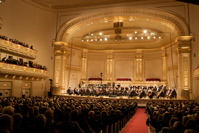Difference between revisions of "Auditorium"
(Created page with 'File:lighterstill.jpgright|frame ==Origin== Latin, literally, lecture room *[http://en.wikipedia.org/wiki/17th_century 1640] The term is ...') |
m (Text replacement - "http://" to "https://") |
||
| Line 3: | Line 3: | ||
==Origin== | ==Origin== | ||
[[Latin]], [[literally]], [[lecture]] room | [[Latin]], [[literally]], [[lecture]] room | ||
| − | *[ | + | *[https://en.wikipedia.org/wiki/17th_century 1640] |
The term is taken from [[Latin]] (from ''audītōrium'', from ''audītōrius'' (“‘pertaining to hearing’”)); the concept is taken from the [[Greek]] auditorium, which had a series of semi-circular seating shelves in the [[theatre]], divided by broad 'belts', called ''diazomata'', with eleven rows of seats between each. | The term is taken from [[Latin]] (from ''audītōrium'', from ''audītōrius'' (“‘pertaining to hearing’”)); the concept is taken from the [[Greek]] auditorium, which had a series of semi-circular seating shelves in the [[theatre]], divided by broad 'belts', called ''diazomata'', with eleven rows of seats between each. | ||
==Definitions== | ==Definitions== | ||
| Line 11: | Line 11: | ||
An '''auditorium''' is a room built to enable an [[audience]] to hear and watch [[performance]]s at venues such as [[theatres]]. For movie theatres, the number of auditoriums is expressed as the number of screens. | An '''auditorium''' is a room built to enable an [[audience]] to hear and watch [[performance]]s at venues such as [[theatres]]. For movie theatres, the number of auditoriums is expressed as the number of screens. | ||
| − | The [[audience]] in a modern [[theatre]] are usually separated from the [[Actors|performers]] by the [ | + | The [[audience]] in a modern [[theatre]] are usually separated from the [[Actors|performers]] by the [https://en.wikipedia.org/wiki/Proscenium_arch proscenium arch], although other types of [[stage]] are common. |
The price charged for seats in each part of the auditorium (known in the industry as the ''house'') usually varies according to the [[quality]] of the view of the [[stage]]. The seating areas can include some or all of the following: | The price charged for seats in each part of the auditorium (known in the industry as the ''house'') usually varies according to the [[quality]] of the view of the [[stage]]. The seating areas can include some or all of the following: | ||
*Stalls or arena: the lower flat area, usually below or at the same level as the stage. | *Stalls or arena: the lower flat area, usually below or at the same level as the stage. | ||
| − | *[ | + | *[https://en.wikipedia.org/wiki/Balcony Balconies] or galleries: one or more raised seating platforms towards the rear of the auditorium. In larger theatres, multiple levels are stacked vertically above or behind the stalls. The first level is usually called the dress circle or grand circle. The highest platform, or upper circle is sometimes known as the gods, especially in large [[opera]] houses, where the seats can be very high and a long distance from the [[stage]]. |
| − | *[ | + | *[https://en.wikipedia.org/wiki/Box_(theatre) Boxes]: typically placed [[immediately]] to the front, side and above the level of the [[stage]]. They are often separate rooms with an open viewing area which typically seat only a handful of people. These seats are typically considered the most [[prestigious]] of the house. A state box or [[royal]] box is sometimes provided for dignitaries. |
[[Category: Theatre]] | [[Category: Theatre]] | ||
Latest revision as of 23:43, 12 December 2020
Origin
Latin, literally, lecture room
The term is taken from Latin (from audītōrium, from audītōrius (“‘pertaining to hearing’”)); the concept is taken from the Greek auditorium, which had a series of semi-circular seating shelves in the theatre, divided by broad 'belts', called diazomata, with eleven rows of seats between each.
Definitions
- 1: the part of a public building where an audience sits
- 2: a room, hall, or building used for public gatherings
Description
An auditorium is a room built to enable an audience to hear and watch performances at venues such as theatres. For movie theatres, the number of auditoriums is expressed as the number of screens.
The audience in a modern theatre are usually separated from the performers by the proscenium arch, although other types of stage are common.
The price charged for seats in each part of the auditorium (known in the industry as the house) usually varies according to the quality of the view of the stage. The seating areas can include some or all of the following:
- Stalls or arena: the lower flat area, usually below or at the same level as the stage.
- Balconies or galleries: one or more raised seating platforms towards the rear of the auditorium. In larger theatres, multiple levels are stacked vertically above or behind the stalls. The first level is usually called the dress circle or grand circle. The highest platform, or upper circle is sometimes known as the gods, especially in large opera houses, where the seats can be very high and a long distance from the stage.
- Boxes: typically placed immediately to the front, side and above the level of the stage. They are often separate rooms with an open viewing area which typically seat only a handful of people. These seats are typically considered the most prestigious of the house. A state box or royal box is sometimes provided for dignitaries.
